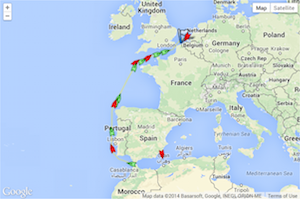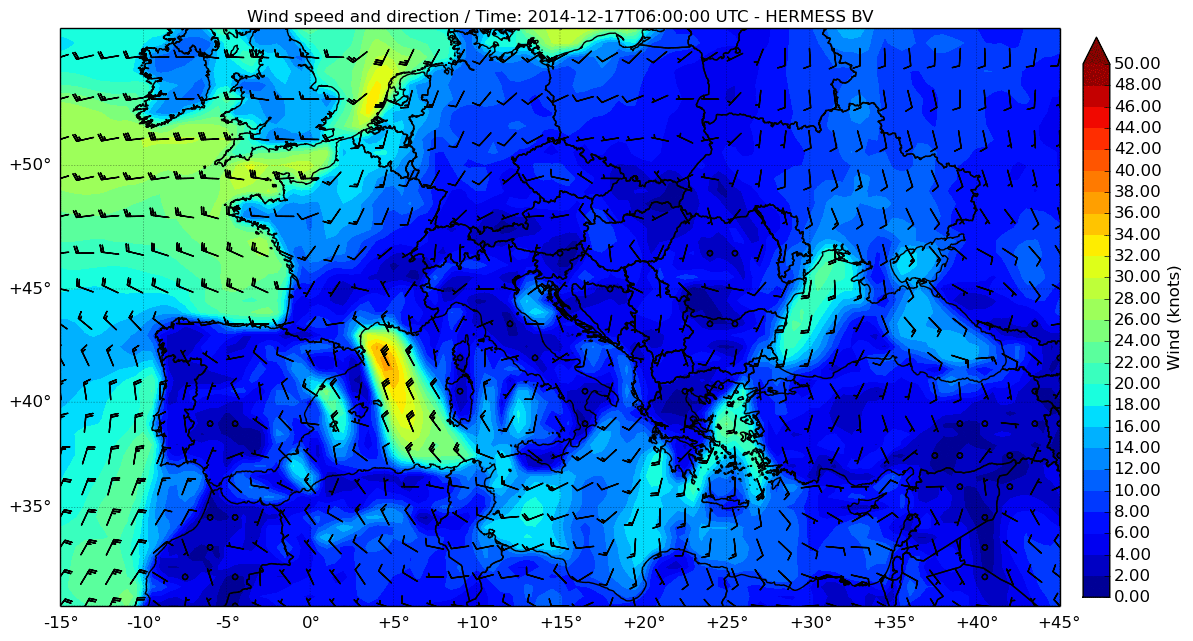Generally, arrival time assessments are based on the distance to port and the mean speed of the ship. Our service takes into account the wind, wave, and current conditions during the trip and the effects that they have on the speed.
Upon arrival of a ship in the harbor a quay needs to be free for offloading of for example containers or bulk products. For this purpose a time slot has been requested and hinterland transport arranged by for example barges or trains and trucks. A ship failing to arrive in time results in infra-structure not being used or last minute reallocation of resources.
To optimize marine transport the current ship position has to be monitored and time to harbour estimated. The latter is influenced by MetOcean conditions along the planned shipping route and requires accurate weather forecasts and ship response parameters.
To predict ship arrival time the effect of wind, waves and currents on its velocity is determined. Assessment of ship response parameters is based on actual shipping data and MetOcean conditions and does not require a dedicated complex physical model of the ship’s hydrodynamic behaviour. The technology combines near real-time ship data, MetOcean forecasts and the ship response parameters to predict sailing times. Ship position and speed are monitored using AIS technology. Historic AIS data and MetOcean data are analysed to assess ship speed related to ambient waves, wind and currents.
The technology will increase efficiency in the maritime transport sector and ports. The service enables optimized use of harbour infrastructure and increase throughput capacity including use of hinterland connections.
The service is provided to support the maritime transport sector, ship owners and seaport authorities.
More information: www.hermess.nl





This page has no comments.